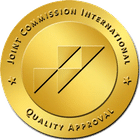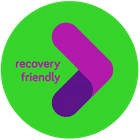GateHouse Treatment recognizes that initiating addiction treatment can be a complicated experience that carries a lot of uncertainty for many. That said, the challenge of obtaining treatment or utilizing the Family Medical Leave Act (FMLA) should not prevent you from getting the help you need for a better quality of life free from substance abuse and active addiction.
With the proper awareness and resources, everyone impacted by addiction, including persons with substance and alcohol use disorder and their families, parents, and partners alike, can make the most out of the Family Medical Leave Act and take time off for medical care without experiencing job loss or retaliation.
FMLA offers those struggling with addiction essential solutions for taking time off work to receive treatment for substance abuse or mental health issues without losing the employment they’ve worked hard to establish.
The following is the second in a series of blogs designed to inform and educate those facing addiction treatment who want to know more about FMLA’s benefits. Our first blog focused on the history of the FMLA. Now, we will address how it works specifically with substance abuse.
Part 2: FMLA and Substance Abuse Treatment
What Are the Criteria for Alcohol and Substance Abuse to Qualify as a “Serious Health Condition?”
Alcohol and substance abuse can have severe health consequences beyond the addiction’s physical aspects. According to the Family and Medical Leave Act Advisor treatment for substance abuse may be considered a “serious health condition” if the employee meets terms for inpatient care and continuing treatment.
Concerning substance abuse treatment, employees can only use FMLA for alcohol and substance abuse if a medical provider is providing the treatment or the health care service provider is referred by a health care practitioner. Absences accrued because of the employee’s substance use, not in recovery from treatment, do not qualify for medical leave.
Substance abuse can significantly impact the employee’s life and their family, so taking it seriously and seeking proper treatment as soon as possible is essential.
How Does the FMLA Safeguard Employment during Treatment?
The Family and Medical Leave Act is an essential safeguard for employees or their covered loved ones undergoing various medical treatments by offering job protection so they can return to their routine life after care. Under the Act, an individual’s employer cannot act against them for exercising their right to take an FMLA leave for medical treatment.
However, if your employee applies a non-discriminatory, established policy, communicating clearly to employees that they can terminate employment for substance abuse regardless of whether they are on FMLA leave under certain circumstances cannot be protected.
Without such protection, people struggling with addiction may hesitate to seek treatment, risking their health and staying in a job where they are less productive and more susceptible to relapse or continuing active addiction.
FMLA supports employees in focusing on their recovery and helps employers retain skilled and valuable workers. In essence, the FMLA plays a vital role in addressing the health of employees and employers while ensuring that addiction treatment is accessible to those who need it.
What Are the Employer and Employee Responsibilities under FMLA?
Both employers and employees must understand their responsibilities under FMLA to ensure compliance and important job protections. Under FMLA, an employer must allow the entitled member to take up to 12 weeks of uncompensated leave over 12 months to seek treatment or provide care for their loved one.
Employers must also continue to provide the employee with health insurance during their leave. Furthermore, employers must allow FMLA-covered employees to return to their same or similar positions with the same pay and benefits.
Additionally, under an FMLA right, an employer cannot interfere, threaten, or punish a covered employee for taking an FMLA leave under the law. After an employer becomes notified that an employee has put in an FMLA leave request under a qualifying cause, they must confirm whether they are eligible under FMLA leave protection.
Should the established employer determine the employee does not qualify for an FMLA leave, they must notify the employee of their FMLA rights, responsibilities, and how much, if any, of the leave is protected by FMLA.
What’s the Process of Initiating FMLA?
Initiating FMLA can feel daunting for those needing medical care, especially amidst their grave circumstances. However, taking steps is vital to getting your life back on track. Generally, requesting an FMLA leave goes as follows:
1) Follow your employer’s policies for requesting medical leave.
2) Give at least 30 days’ notice before beginning FMLA leave. If that’s not possible, provide as prompt notice as possible.
It’s vital to understand that you do not have to share your medical history with your employer but should provide sufficient information so they can determine whether the FMLA request qualifies for protection. You must also let your employer know if FMLA leave has been taken or approved for the same circumstances previously. Sometimes, your employer may ask for certification from a healthcare provider verifying the need for medical leave and other documents.
Seeking guidance from HR representatives or legal professionals can alleviate some of the stress of requesting an FML leave. Employees requesting leave can also discuss their options, concerns, and recommendations with the healthcare provider prescribing the temporary leave. By initiating FMLA, individuals can prioritize their health and well-being while feeling confident that their jobs and incomes are secure.
Why Is Timely Communication with Employers Important?
Timely communication is vital to maintaining healthy relationships with employers, especially regarding FMLA or addiction treatment issues. Keeping your employer informed about such circumstances helps prevent possible misunderstandings and ensures you receive the flexibility needed to overcome your challenges. You must notify employers of your FMLA request as soon as possible. Thirty days advance notice is best, but if you need to request your leave sooner, inform your employer as quickly as possible.
Keeping an open dialogue can also help build trust and show a willingness to work together towards solutions. Neglecting to communicate effectively could have negative consequences, including job loss or even legal action.
GateHouse Treatment and the FMLA: More to Come
GateHouse Treatment works with clients to ensure their FMLA documentation is in order and meets compliance requirements. Doing so helps our clients prioritize their healing without worrying about the logistics of taking a leave from work. Through collaboration, patients can achieve more successful outcomes in addiction recovery.
Future installments of this series will include more details on how GateHouse Treatment can help with the application process, local resources, FAQs, and more.
Whether you need assistance deciphering the FMLA process or require additional resources regarding addiction, our team is here to help! Contact GateHouse Treatment today by calling us at 855-448-3588 or visiting our contact page and letting us know how we can help.
You don’t have to do this alone.
- Family Support and Addiction Recovery: 9 Helpful Tips - April 2, 2025
- 7 Powerful Tips for Single Mothers in Recovery from Alcohol! - February 6, 2025
- First Responders and Substance Use: A Guide to Recovery - December 31, 2024




